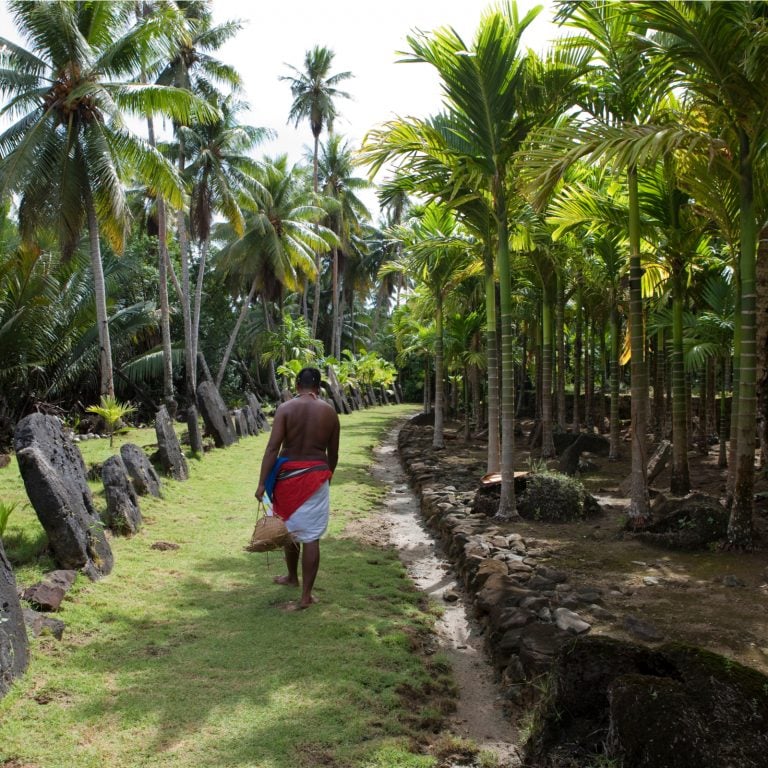
2018-7-31 23:45 |
Archaeologists are arguing that a pre-modern stone money used by Micronesian islanders resembles a precursor to bitcoin and distributed ledger technology.
Also Read: Largest Cannabis Community Market in Israel to Accept Bitcoin Payments
Archaeologists Highlight Similarities Between Micronesian Stone Money and BitcoinScott Fitzpatrick, an archaeologist at the University of Oregon in Eugene, has argued that a stone form of money used by inhabitants of the Micronesian island of Yap, at least several hundred years ago, comprises a predecessor to bitcoin and blockchain technology. “Stone money transactions on Yap were the precursor to Bitcoin and blockchain technologies,” Mr. Fitzpatrick stated.
During April’s annual meeting of the Society for American Archaeology in Washington, D.C., Mr. Fitzpatrick elaborated on his theory, stating: “Centuries ago in western Micronesia, Yapese islanders began traveling to the Palauan archipelago to carve their famous stone money from limestone, which they then transported back to use in a variety of social transactions. While commonly referred to as ‘money’, these disks were not currency in the strict sense, though their value is not dissimilar to other traditional and modern objects where worth is arbitrary based on both real and perceived attributes (e.g., size, shape, quality, pedigree, or other factors). These characteristics have corollaries in today’s society for material culture and electronic cryptocurrencies that use blockchain technology—essentially, digital ledgers that track financial transactions in real time across a computer network to ensure that they are seamless and incorruptible.”
According to Science News, each limestone disk, or “rai,” was “assigned a value based on size, evenness of shape, stone quality and risks taken on the journey. After being inspected and verified by a local chief, rai were displayed at communal spots, such as ritual dancing grounds. Ownership of a disk could be transferred, for instance, as a wedding gift, to secure political allies or in exchange for food from residents of nearby islands after a severe storm. These deals also occurred in front of the whole community. No matter who acquired a rai, it stayed in its original location.”
“Traditional Forms of ‘Money’ or Exchange Valuables are the Precursor to Bitcoin”Among the similarities highlighted between rai and bitcoin, is the public storage of rai, the peer-to-peer maintenance of the infrastructure and circulation of rai, the open auditability of rai, the use of rai as a means of exchange, and the fact that rai were produced through a process of mining.
Mr. Fitzpatrick concludes that “transactions involving traditional forms of ‘money’ or exchange valuables are the precursor to Bitcoin and other technologies that demand a unified and continuous chain of information to ensure that the value is known and ownership indisputable. This research suggests that Yapese stone money is just one of many cases in the ancient past of humans, through social networks, attempting to create accurate and unbroken lines of communication so that economic relationships can be established, maintained, and rectified.”
Kathryn Sampeck, an anthropological archaeologist at Illinois State University in Normal, has also supported the theory that the stone money of Yap resembles a predecessor to bitcoin technology, describing such as “legitimate.”
What is your response to Mr. Fitzpatrick’s theory? Join the discussion in the comments section below!
Images courtesy of Shutterstock
Want a comprehensive list of the top 500 cryptocurrencies and see their prices and overall market valuation? Check out Satoshi Pulse for all that hot market action!
The post Archaeologists Argue Micronesian Stone Money Comprises Bitcoin Predecessor appeared first on Bitcoin News.
origin »Bitcoin (BTC) íà Currencies.ru
|
|
